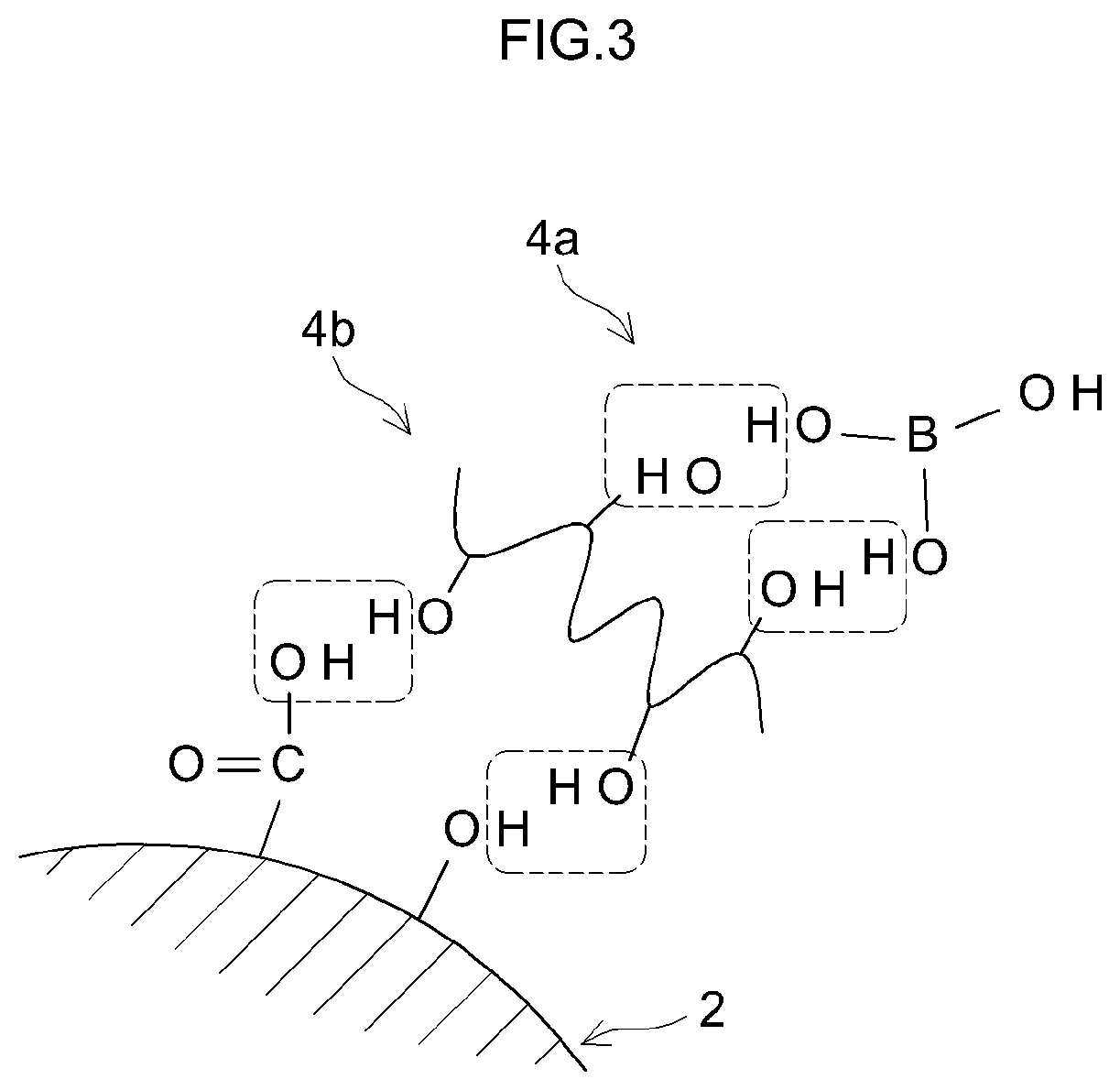Negative electrode material and lithium secondary battery using same
a negative electrode and secondary battery technology, applied in the direction of active material electrodes, cell components, electrical equipment, etc., can solve the problems of battery characteristics deterioration, internal resistance increase, negative electrode active material repeating expansion and contraction, etc., to achieve excellent high-rate cycle characteristic, low initial resistance, and easy adjustment
- Summary
- Abstract
- Description
- Claims
- Application Information
AI Technical Summary
Benefits of technology
Problems solved by technology
Method used
Image
Examples
examples 1 to 4
[0060]First, a negative electrode active material (average particle diameter 10 μm, specific surface area 3 m2 / g to 4 m2 / g) having an R value of 0.2 to 0.74 was prepared. Next, the negative electrode active material, an aqueous solution containing polyvinyl alcohol (PVA, degree of saponification: 90 mol %, degree of polymerization: 1500) as a crosslinking agent, and an aqueous solution including boric acid (decomposition temperature based on TG-DTA is 300° C.) as a boron compound were mixed in mass ratios of the negative electrode active material:PVA:boric acid=100:6.9:2.0, and water was evaporated to dryness. Boric acid and PVA were thus attached to the surface of the negative electrode active material. Next, the negative electrode active material having boric acid and PVA attached thereto was calcined in an inert atmosphere at a calcination temperature of 160° C. In this way, a negative electrode material including a negative electrode active material and a coating portion dispose...
PUM
| Property | Measurement | Unit |
|---|---|---|
| mass ratio | aaaaa | aaaaa |
| particle size distribution | aaaaa | aaaaa |
| particle size distribution | aaaaa | aaaaa |
Abstract
Description
Claims
Application Information
 Login to View More
Login to View More - R&D
- Intellectual Property
- Life Sciences
- Materials
- Tech Scout
- Unparalleled Data Quality
- Higher Quality Content
- 60% Fewer Hallucinations
Browse by: Latest US Patents, China's latest patents, Technical Efficacy Thesaurus, Application Domain, Technology Topic, Popular Technical Reports.
© 2025 PatSnap. All rights reserved.Legal|Privacy policy|Modern Slavery Act Transparency Statement|Sitemap|About US| Contact US: help@patsnap.com



